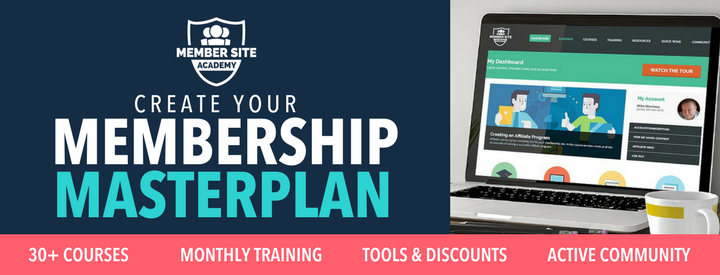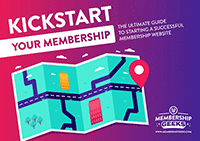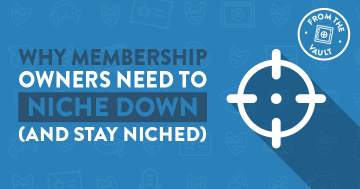When it comes to researching and testing ideas, Pat Flynn wrote the book.
Literally.
In addition to his insanely popular blog and podcast SmartPassiveIncome.com, Pat is also the author of the New York Times bestselling book, Will it Fly? How to Test Your Next Business Idea So You Don't Waste Your Time and Money.
It's a fantastic book with helpful exercises to evaluate, research, and prove your ideas before you roll out.
Evaluating your idea is crucial when it comes to membership websites, so we jumped at the chance to have Pat share his best advice for validating your membership idea.
1. You Need to do your Research
“The Biggest fear some people have is working on something that fails. It doesn’t feel good to fail,” Pat noted.
You have to take action because if you don’t, nothing will happen. But if you just launch without any research, you have no idea what will happen. Some of us are afraid to do this research beforehand because we fear the answer will be that it won’t work. We feel better working on something that we hope will succeed.
It’s human nature to take action based on hope, but when you just rely on that, it will bite you later.
When you combine that hope with research and knowing, you’ll be able to move forward with that much more confidence.
2. Get Paid Upfront
Getting people to pay you for something upfront is the only way you’ll know people will pay for it later.
It’s validating the market need and willingness to pay for your idea before you spend the time creating it.
We’re paying for a lot of things upfront now. Take Kickstarter for example, we’re paying for ideas.
It’s the same thing with your membership site.
Go out there and see if you can get one customer. Other people will build out their platform and business cards and then they try to get a customer and no one buys. That’s doing it in the wrong order.

This is NOT a valid membership strategy!
3. Make the Upfront Sell and Then Build Your Membership
Pat advised membership entrepreneurs to validate their idea by getting five customers to pay upfront.
It doesn’t matter that you don’t have your membership website built yet. Put them in a Facebook group and work with them there.
You can get their help shaping what your membership will become.
If you can’t get people to pay upfront, what makes you think you’re going to get people to do it later?
Share content and pieces of the membership site as you create it.
Ultimately everyone will be better off because you’ll be creating what your customers actually need.
4. Talk to Your Audience
Tim Ferris taught that validating an idea is putting up a landing page before you create the product and tracking how many people click the buy now button.
The problem with this is that you don’t know what people are or aren’t buying.
You could have a problem with your sales page and you wouldn’t know it.
Then, you’d dump an idea not because it was bad, but because the landing page wasn’t right.
When you ask someone about your idea, even if they don’t like it, you can ask why.
Then you’ll be able to make the necessary changes instead of being blind to results.
Have an interaction with a target customer, run the idea with them through a small experience, and make changes accordingly.
Once you’ve fine-tuned your membership website, then you go big scale knowing it’s working.
The worst time to ask someone what they want is after you’ve created your product.
5. What to Do When No One Buys
If you’ve skipped the validation stage, opened the doors and no one buys, there’s always a way to go back and fix things.
If you’re honest with everyone, it’s going to be even better.
Don’t send an email blast saying you screwed up, take a small sample of 5-10 power users who are most active in your community and have an honest conversation with them.
Find out their point of view and get their ideas.
You can also run a survey.
Pat Flynn did this and ended up making a lot of changes. In fact, that’s where Will it Fly? came from.
He didn’t tell his audience he needed to pivot. He asked them what was working and what wasn’t and then made changes.
6. Write Down Your Ideas
If you have a new idea every other day, narrowing them down can be a challenge. Pat’s advice is to write them all down.
When you see your ideas on paper, a few will stand out to you or just obviously not fit. Our brains are great at coming up with ideas, but not evaluating them.
One by one, see if you can turn each idea into something that makes sense.
Work through the business model and what it would look like as a membership site.
Connect the dots between your idea and what your audience needs. And then talk to people.
Just by talking about it with others, you’ll see if your idea has wings.
Pat Flynn's resounding advice was clear, “If you’re going to be an entrepreneur, you have to step out of your comfort zone.”






